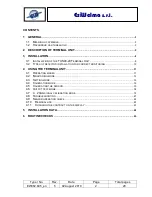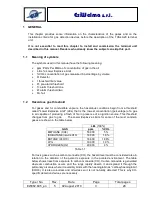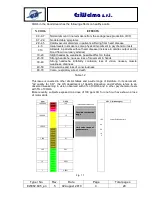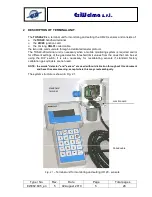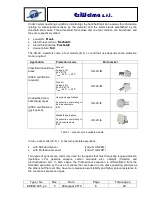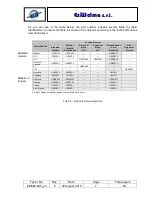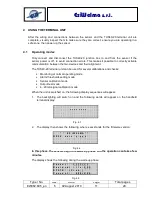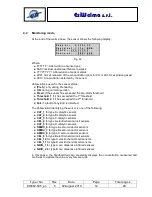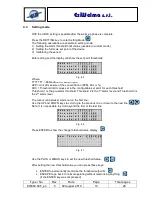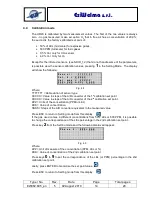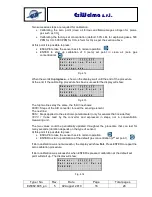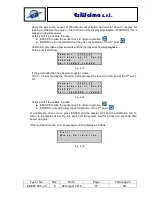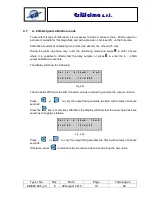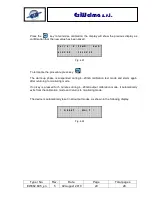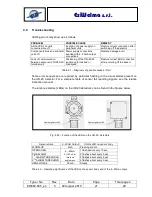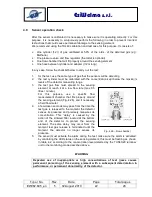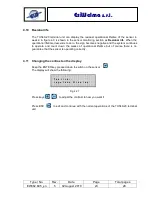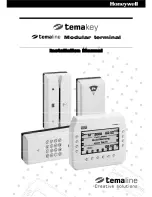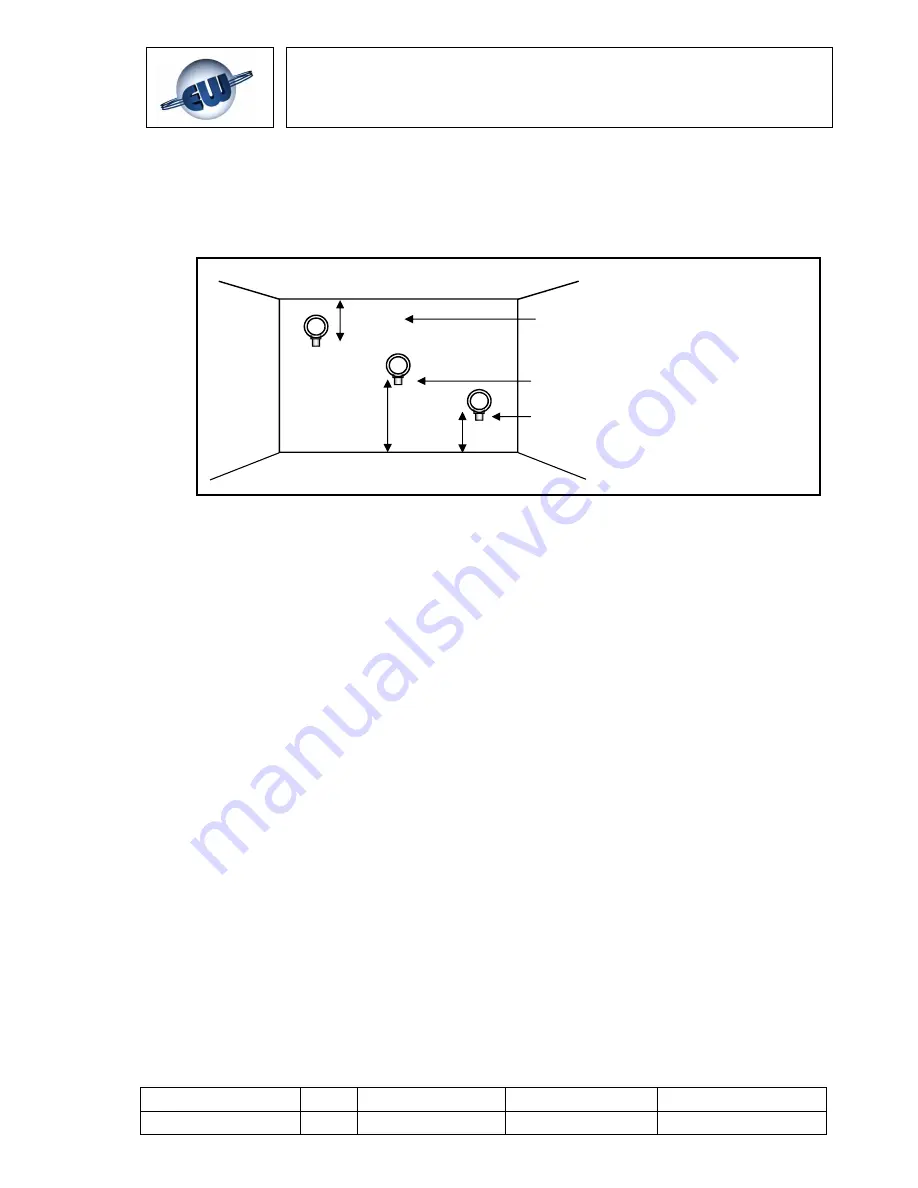
Type / No.
Rev.
Date
Page
Total pages
EW082.695_en
5
02 August 2010
10
28
EsiWelma
s.r.l.
3.2
Types of detector installation for correct monitoring
The detectors must be wall-mounted at whatever height is appropriate for the type of gas to
be detected (Fig. 3.4).
Fig. 3.4 – Possible detector positions
Use the information below to correctly position the detectors:
•
20 cm from the floor to detect gases heavier than air (LPG or Gasoline Vapours)
•
20 cm from the ceiling to detect gases lighter than air (Methane)
•
midway between floor and ceiling (1.5 - 2 m) to detect gases as heavy as air (CO)
The TUS40-20 termination kit comes with a 3 m coiled cable so it can operate correctly
even at a considerable height and distance from the sensor.
The connection cable must not be stretched to its full length when it is plugged in to
make sure it does not disconnect from the junction card.
Do not use extension cords on the cables and do not extend the cables themselves by
cutting and joining as this may adversely affect the proper operation and safety of the
device.
To guarantee correct gas detection, in addition to the instructions above, the positions of the
detectors must take into consideration the following specific installation guidelines:
The detector must be mounted:
•
where accidental gas leakages are possible
•
at least 1.5 metres from heat sources
•
not in spaces where ventilation is poor and where gas pockets may form
•
at least 1.5 metres from vent holes
•
away from hindrances to natural gas flow
•
in environments with a temperature range of -20°C to 50°C and relative humidity below
90% (non-condensing).
20 cm
from the ceiling
20 cm from
the floor
1,5-2 m
from the
floor
URG40.. (Methane)
URO40.. (CO)
URP40.. (LPG) URB40.. (Gasoline vapours)


